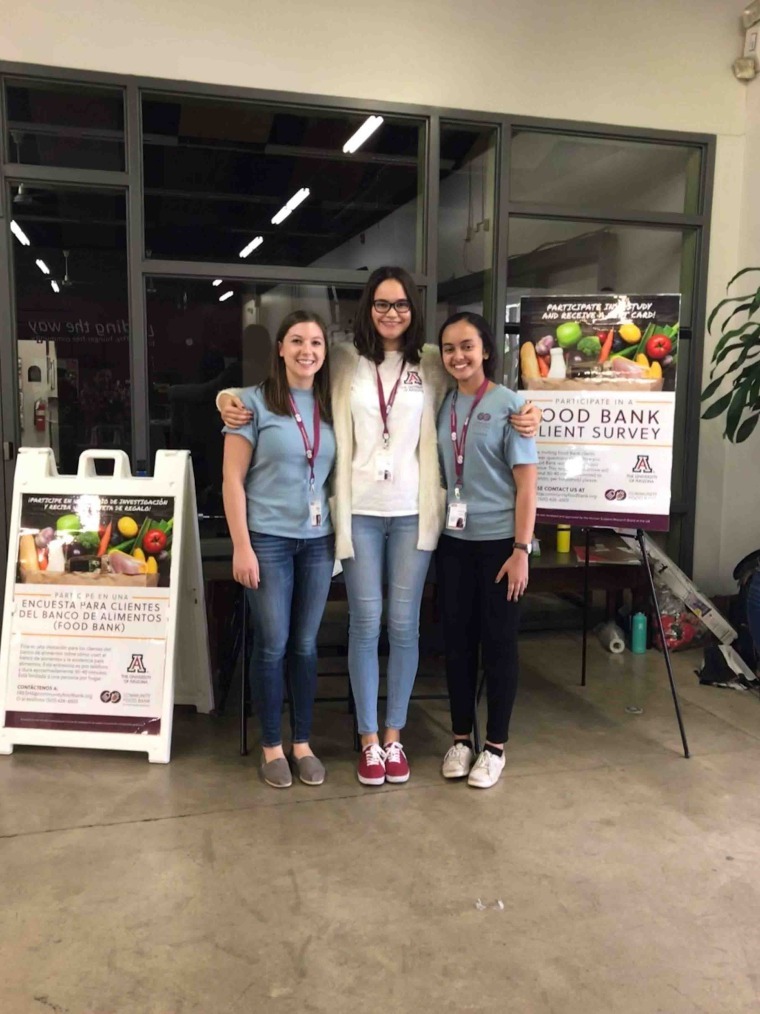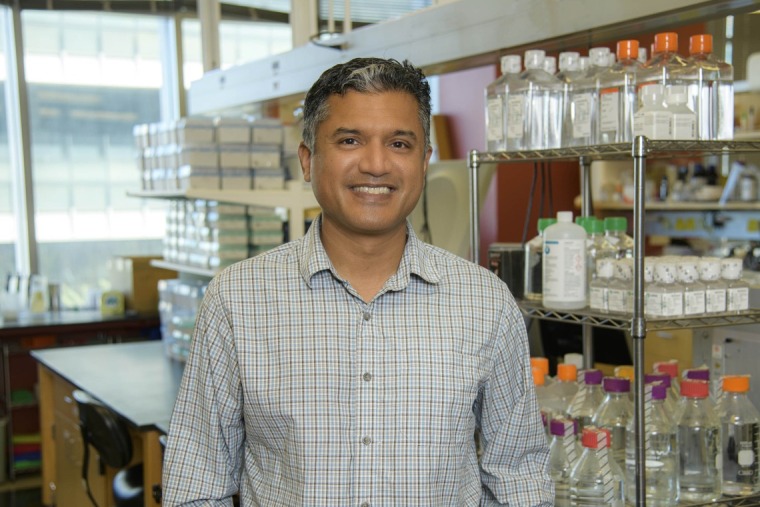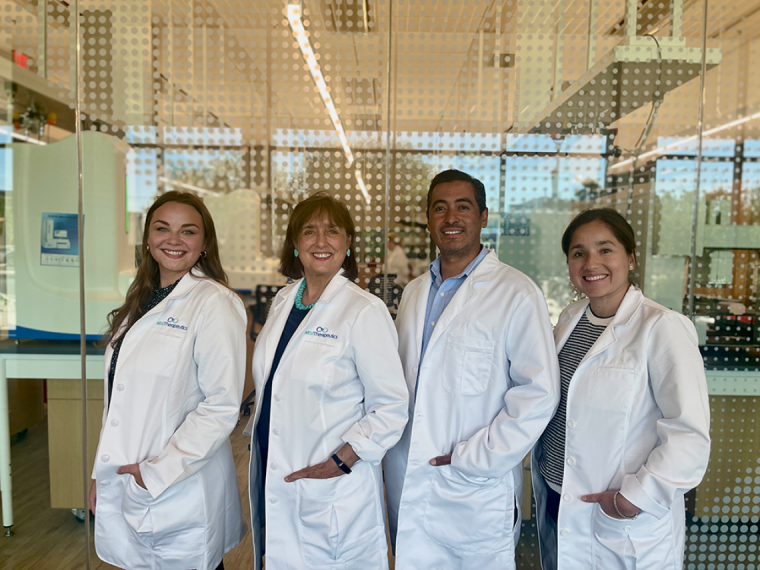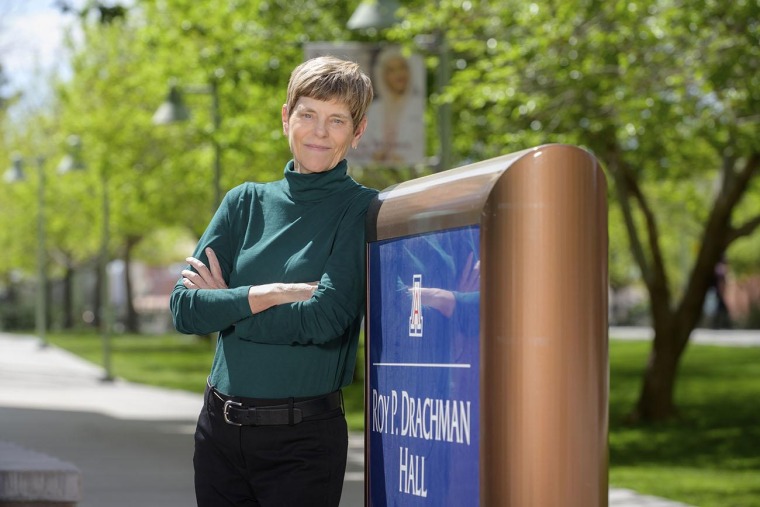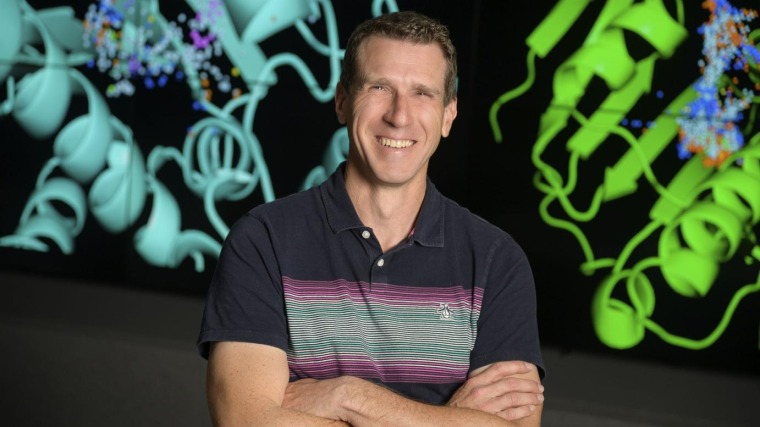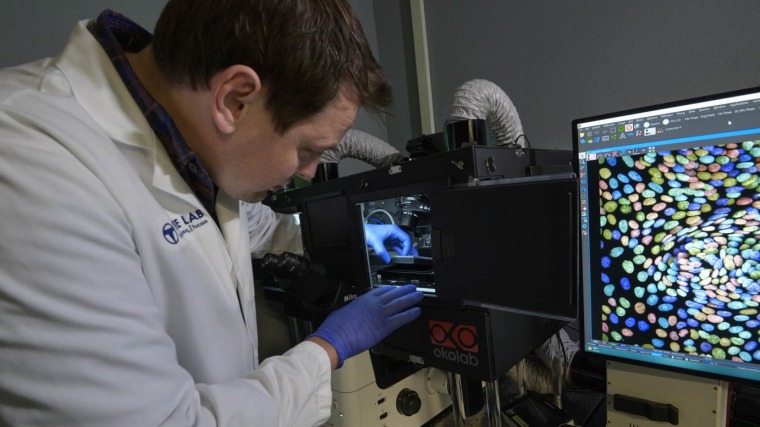Pioneering technologies in nanoscience and medicine

See how an interdisciplinary scientific approach shaped the future of molecular diagnostics and personalized healthcare on a global scale. Amy Randall-Barber from the BIO5 Institute was joined on Science Talks by Dr. Frederic Zenhausern, director of the Center for Applied NanoBioscience and Medicine (ANBM) at the University of Arizona College of Medicine - Phoenix, among many other appointments in the college including in Basic Medical Science, Radiation Oncology, Biomedical Engineering, and Clinical Translational Science. Prior to coming to the university, Dr. Zenhausern co-founded and directed the Flexible Display Center at ASU MacroTechnology Works. He received his bachelor’s degree in biochemistry from the University of Geneva, an MBA in finance from Rutgers University, and his doctorate in applied physics from the Department of Condensed Physics Matters at the University of Geneva in Switzerland. Dr. Zenhausern is an inventor, mastering interdisciplinary work in science, technology and healthcare, to drive clinical translation.
This interview has been edited for length and clarity.
ARB: Let’s start with a couple of ice-breaker questions to lighten up the mood. What was your dream job as a kid?
When I was a kid, I loved animals and I wanted to be a vet.
ARB: What would you like to be known or remembered for?
What I think is interesting is in my training and professional career, I call myself a true interdisciplinary scientist.
I think I demonstrated how interdisciplinary science brings ideas across many different areas of scientific and engineering technologies. I developed some basic optical sciences while I was at IBM, a product platform at Motorola labs. Even now at the University of Arizona, we have developed a technology that goes through the FDA and brings practical solutions in life sciences, bio defense and healthcare. We have a very broad portfolio of technological impact.
ARB: You started off in Switzerland, and you ended up in Arizona. Can you tell us how you ended up here?
That’s a long story. When I was in Switzerland, I did my PhD thesis in partnership between the University of Geneva and University of Lausanne, but also IBM Research in Zurich. And after my PhD, I was looking for a postdoctoral position. I got a beautiful location at UC Santa Barbara with a nice beach and my wife was happy! We were ready to move to California, but IBM twisted my arm and said you should come and work for us at the IBM Research Lab, located in Bronx. And it was a difficult sell, but ultimately a great experience for us.
In the years that the MIT-IBM Watson AI Lab would develop different technology platforms, including DNA sequencing, I was the first to bring a real virus for IBM to look at using high resolution microscopy techniques. We made a lot of different discoveries which then led me to develop all kinds of technologies.
In a move to Princeton, New Jersey, I was a part of a Swiss chemical company developing new technology mimicking the human nose and looking at electronic nose technology. I also joined a photonic center at Princeton University as an industry member, which led me to start a new startup company in Princeton that was a subsidiary of a French startup, commercializing electronic nose technology. At the time, we were also discussing with David Wald at Tufts University the technology that started Illumina, that we all now know in the field of DNA sequencing.
Also, I was recruited as one of the advisory board members in the Motorola Company. They were establishing a new biosystem in Arizona to start DNA microarray technology, and I got recruited to come to Arizona.
ARB: You were inducted into the National Academy of inventors as a fellow in 2013, for the invention of a rapid DNA processor. Since you mentioned working with the inventor of Illumina, can you explain how we use the DNA processor today and how it has evolved since then?
The goal for us has always been to try to do molecular diagnostics. When we started the technology using microfluidic devices to automate and simplify the workflow processes for preparing a specimen, we realized that any application in medicine would be a long project for us since we needed to go to the FDA for regulatory compliance.
We also looked at other applications, where there were some elements of regulations but not as stringent. At that time, there was a big backlog of DNA fingerprinting. It was taking years until a sample could be processed. So, the Department of Justice decided to promote a new technology to solve the backlog. We came up with that technology focused around reducing work through laboratory processes and put it into a small machine.
And that’s what we did initially with our contract with the FBI. The FBI introduced us to other countries and police forces, including the UK Forensic Science Services, or FSS. They were the leading inventors of the technology with a group at a university in the UK. They had the vision of bringing technology closer to the crime scene. Initially, we developed a technology that would go into a police van. But that scenario changed and ultimately, that technology was deployed at a police station instead. That allowed the screening of potential offenders and finding a sample much easier.
It was a complex regulatory validation. We were a part of a larger European program called MIDAS consortium, where we validated the technology between the police forces in the UK, Germany, Austria and the Netherlands, which proved successful. In 2017, the DNA Act was modified to include rapid DNA Act to court proceedings. This marked the commercial development and widespread adoption of our technology within the Justice Department.
ARB: Wow, I’m just blown away. You are currently the director of the Center for Applied Nano Bioscience here at the University of Arizona. Can you briefly tell us about the research there?
We have a large portfolio of activities. The center consists of a group of 15 members, including mechanical engineers, physicists, MDs, PhDs, and molecular biologists. Our goal is to identify medical needs in healthcare delivery by applying engineering principles to find solutions. Collaboration is at the heart of our approach, as we work with various agencies and industry partners including NASA, NIH, and DOD.
Typically, our projects are early-stage discovery projects. For example, we are exploring novel drug delivery systems, using plant-derived lipids, an intrinsic agent with anti-inflammatory and antioxidant properties. Loading these lipids with different drugs or utilizing these plants for gene delivery, represents a promising avenue for drug development.
Furthermore, we have developed an invitro system that could potentially replace animal models for testing drugs. On this platform, we combine organic chips with organoids for 3D cell culture. Under a partnership with Mitsubishi Gas Chemical company in Japan, we are scaling up the production of this technology for commercialization as it holds potential for drug testing and personalized treatment.
We are exploring personalized medicine using organoid-based techniques to analyze genomic signatures of tumors and adapting therapies. For example, if at a hospital consultation you extract tumor cells and treat that tumor in a model, you can look at different combination of therapies that might be more appropriate for that person. By integrating these technologies, we are trying to improve patient outcomes.
ARB: How long does it take for something like this to come into use?
So, it depends. For example, when we talk about rapid DNA testing, it took about 15 years from development to implementation. On the other hand, the COVID test we developed, approved by the FDA and available on Amazon, was developed in less than a year. Now, these kinds of platform technologies for organoids will take a few years, about five years, until they can be deployed in the marketplace, because they will still be in the research platform phase.
ARB: Thank you. Just curious because this is such amazing technology, and it is needed.
It is a good point. Sometimes we think about getting a grant for five years, but most of the time, it's not enough time to mature technology.
So, what are the mechanisms in academia that allow us to keep going and be part of its development, until a new company can take it? There are a few mechanisms that the government is offering. And that is why I think getting to the university's vision and sustainability of developing those kinds of technology is crucial.
ARB: Absolutely. Can you share what inspired you to pursue this interdisciplinary work? Was it something you always wanted to do, or did you find your way here unexpectedly?
That's a good question. My journey began with a background in biochemistry during college. When I reached my senior year, I embarked on a research project. Coincidentally, IBM Research in Zurich had just seen two of their scientists awarded the Nobel Prize in Physics for the discovery of the scanning tunneling microscope. This device could profile surfaces and see atoms, which fascinated me. I saw the potential for its application in molecular studies.
So, I reached out to those scientists at IBM for a summer internship. They said, ‘we don’t do biology, we do physics.” However, I secured the internship and, although we didn’t know what to do, we started to look at molecules using the technology. I was so excited by the experience that I decided to pursue a PhD in physics. That's how I found my passion for interdisciplinary work and everything else fell into place.
ARB: You have focused on various scientific arenas throughout your career. However, you also pursued an MBA in finance. How do you believe that has influenced your professional journey?
Yes, indeed. Let me provide some context first. It was back in the year 2000 when I was residing in the bustling New York area amidst a booming economy. There was this prevailing notion that Wall Street held the promise of substantial wealth creation, attracting scientific talent like mathematicians and physicists from esteemed institutions such as Princeton into venture capitalist circles.
I was influenced by this trend. However, I also recognized that one day I wanted to have a startup company, and adding financial and managerial skills would be helpful. That’s why I enrolled in a finance-focused MBA program. Finance, with its heavy emphasis on mathematics, seemed conducive to the scientific mindset.
The program not only equipped me with financial acumen but also enhanced softer skills crucial for effective people management and interaction. In retrospect, it proved to be an asset, and I found myself applying those principles right from the outset of my career.
ARB: What are you currently looking forward to in your academic or personal life?
On a personal level, I feel incredibly privileged to have two outstanding adult children who are now embarking on exciting ventures in medicine and engineering. It is a great source of immense joy for me, especially as our family continues to grow, welcoming our first grandchild.
Professionally and academically, my focus remains on serving the community and addressing some of the grand challenges in our society. I am deeply committed to continuing this work and exploring innovative solutions. With the rapidly changing economy, we find ourselves at the intersection of cleantech, biotech, and space tech. This convergence presents exciting opportunities as we explore and venture into new frontiers. It’s a very exciting time for us. Oh, and on a different note I love mountain biking and would like to start a new club here in Phoenix for biking enthusiasts.
ARB: That would be so cool. We thank you again for being here with us today and sharing about your journey, your inventions, and everything that you are doing now.



